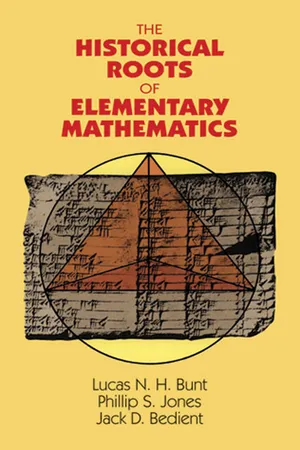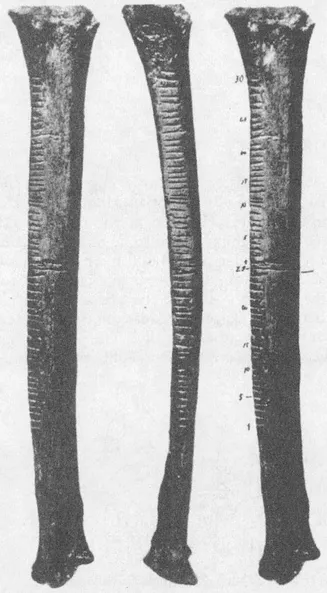
The Historical Roots of Elementary Mathematics
- 336 pages
- English
- ePUB (mobile friendly)
- Available on iOS & Android
The Historical Roots of Elementary Mathematics
About this book
"Will delight a broad spectrum of readers." — American Mathematical Monthly.
Do long division as the ancient Egyptians did! Solve quadratic equations like the Babylonians! Study geometry just as students did in Euclid's day! This unique text offers students of mathematics an exciting and enjoyable approach to geometry and number systems. Written in a fresh and thoroughly diverting style, the text — while designed chiefly for classroom use — will appeal to anyone curious about mathematical inscriptions on Egyptian papyri, Babylonian cuneiform tablets, and other ancient records.
The authors have produced an illuminated volume that traces the history of mathematics — beginning with the Egyptians and ending with abstract foundations laid at the end of the nineteenth century. By focusing on the actual operations and processes outlined in the text, students become involved in the same problems and situations that once confronted the ancient pioneers of mathematics. The text encourages readers to carry out fundamental algebraic and geometric operations used by the Egyptians and Babylonians, to examine the roots of Greek mathematics and philosophy, and to tackle still-famous problems such as squaring the circle and various trisectorizations.
Unique in its detailed discussion of these topics, this book is sure to be welcomed by a broad range of interested readers. The subject matter is suitable for prospective elementary and secondary school teachers, as enrichment material for high school students, and for enlightening the general reader. No specialized or advanced background beyond high school mathematics is required.
Frequently asked questions
- Essential is ideal for learners and professionals who enjoy exploring a wide range of subjects. Access the Essential Library with 800,000+ trusted titles and best-sellers across business, personal growth, and the humanities. Includes unlimited reading time and Standard Read Aloud voice.
- Complete: Perfect for advanced learners and researchers needing full, unrestricted access. Unlock 1.4M+ books across hundreds of subjects, including academic and specialized titles. The Complete Plan also includes advanced features like Premium Read Aloud and Research Assistant.
Please note we cannot support devices running on iOS 13 and Android 7 or earlier. Learn more about using the app.
Information
1
EGYPTIAN MATHEMATICS
1-1 PREHISTORIC MATHEMATICS


Table of contents
- DOVER SCIENCE BOOKS
- Title Page
- Copyright Page
- Dedication
- Table of Contents
- PREFACE
- THE GREEK ALPHABET
- 1 - EGYPTIAN MATHEMATICS
- 2 - BABYLONIAN MATHEMATICS
- 3 - THE BEGINNING OF GREEK MATHEMATICS
- 4 - THE FAMOUS PROBLEMS OF GREEK ANTIOUITY
- 5 - EUCLID’S PHILOSOPHICAL FORERUNNERS
- 6 - EUCLID
- 7 - GREEK MATHEMATICS AFTER EUCLID. EUCLIDEAN VS. MODERN METHODS.
- 8 - NUMERATION AND ARITHMETIC AFTER THE GREEKS
- HINTS AND ANSWERS TO SELECTED EXERCISES
- INDEX
- A CATALOG OF SELECTED DOVER BOOKS IN ALL FIELDS OF INTEREST